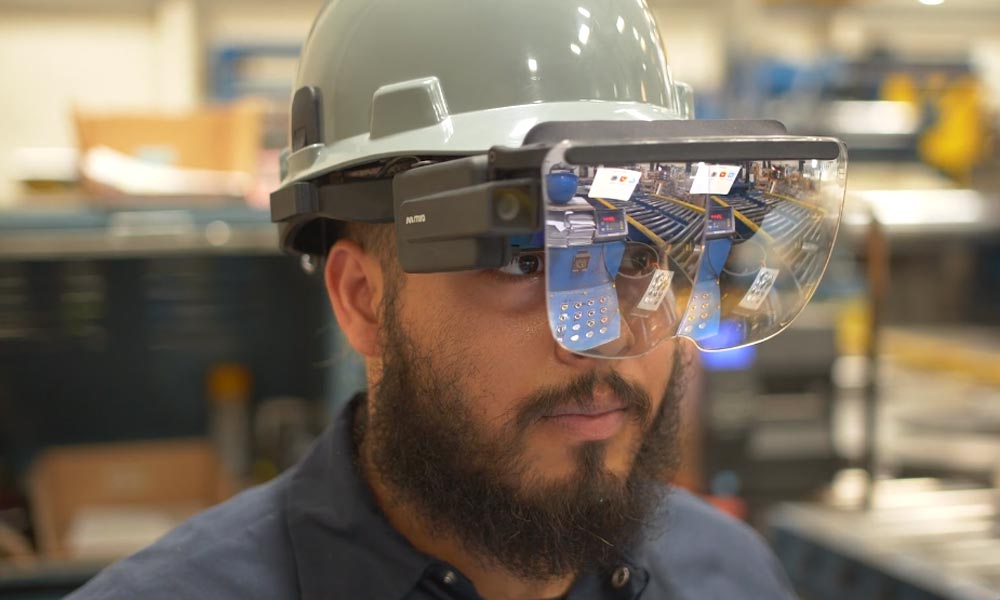Augmented Reality Startup Mira Raises $10 Million
Mira has ambitions to win over industrial customers with its AR glasses.
AR hardware companies have had a rough run over the past few years. There have been enterprise-focused efforts such as Daqri, ODG and Meta but all of these have fizzled out. One of the most promising immersive hardware stories was that of Magic Leap which raised billions of dollars to finance its ambitious AR hardware development plans but it has been scaling down its operations over the past few months and even offloaded hundreds of its staff.

This year has been a particularly hard one for immersive hardware manufacturers. A general sluggish performance in 2019 was compounded by the COVID-19 pandemic.
One company in this space that is still making the moves is the US startup Mira. Back in 2017, the company had raised money from the likes of Sequoia to build cheaper augmented reality hardware, trying to mirror the success of Samsung Gear VR and Google Daydream but in the AR scene by building a kind of “Google Cardboard for AR”. Its product was meant to offer end users an ultra-cheap and ultra-lightweight induction into the world of augmented reality. After teasing workplace and at-home use-cases for its product, that effort had floundered after an attempt to recruit developers into building consumer apps for the product.
Towards the end of 2018, Mira, like Magic Leap, began pivoting towards the enterprise market via a simple and pragmatic solution: building cheap AR for the enterprise market. The company now refocuses its efforts on the industrial rollouts of its AR headset.
In spite of this pivot, Mira still remained faithful to the smartphone AR principle. Its Prism Pro remains an optics holder for the iPhone which reflects the image from the smartphone display in a semi-transparent manner to the wearer of the AR device.
The Prism Pro does not provide users with advanced Augmented Reality that factors in the space and 3D projections like the Microsoft HoloLens 2. It is cheap and even runs with the older iPhones. By connecting the smartphone to a camera which is mounted on the low-cost augmented reality headset, the wearer is able to cover some meaningful telepresence and remote maintenance scenarios, allowing the user to enjoy a hands-free working mode. It is also practically indestructible and will easily lend itself to industrial applications.
Since then, Mira has largely kept a low profile as the other leading players made the big moves in the space, including the entry of the largely successful mixed reality startup Nreal.
Now it appears that Mira is back with some new developments. The company has now raised about $10 million from venture capitalists that will go into furthering the development of its offerings. With the latest funding round, Mira has now raised just under $13 million since 2017.
Mira treats the latest funding round as a seed extension round. The financing was led by Sequoia and the SF-based Happiness Ventures. The startup did not breakdown the specifics of the latest round. The infusion of cash, like the previous ones, will be used in refocusing Mira’s business and refining its hardware.
Mira’s Prism Pro headset avoids some of the technical complexity which has been a major hindrance for other entrants in this market segment, many of which have struggled to stay on in this space. Mira’s headset features a simple design suited for the task. It has a slot-in design where users can slot in their older generation iPhone designs and connect physically to a head-mounted camera which enables users in an industrial setting to scan items and markers. The device is also more affordable and simpler to operate. You can easily integrate it into the organization’s enterprise device management structure.
However, its capabilities are much less than what you would get with a full-scale mixed reality device such as the Microsoft HoloLens. The Prism Pro hardware exudes “true AR” capabilities and instead of spatial tracking and mapping, will augment your vision via a heads-up display window. It has an added camera used for scanning items instead of generating depth maps which enables holograms to be projected onto a space’s geometry. This is like a tablet for the face which can be controlled through taps and the gaze.
This year might not appear like the perfect time to build an Augmented Reality startup but Mira’s founders are bullish about where the company has reached so far after it refocused its efforts to manufacturing. The company has probably been able to onboard more customers onto its platform who use its hardware on a daily basis than the more established and better-funded players such as Magic Leap.
https://virtualrealitytimes.com/2020/07/26/augmented-reality-startup-mira-raises-10-million/https://virtualrealitytimes.com/wp-content/uploads/2020/07/Mira-Prism-Pro-Augmented-Reality-Glasses-600x360.jpghttps://virtualrealitytimes.com/wp-content/uploads/2020/07/Mira-Prism-Pro-Augmented-Reality-Glasses-150x90.jpgAugmented RealityTechnologyMira has ambitions to win over industrial customers with its AR glasses. AR hardware companies have had a rough run over the past few years. There have been enterprise-focused efforts such as Daqri, ODG and Meta but all of these have fizzled out. One of the most promising immersive hardware...Sam OchanjiSam Ochanji[email protected]EditorVirtual Reality Times - Metaverse & VR
